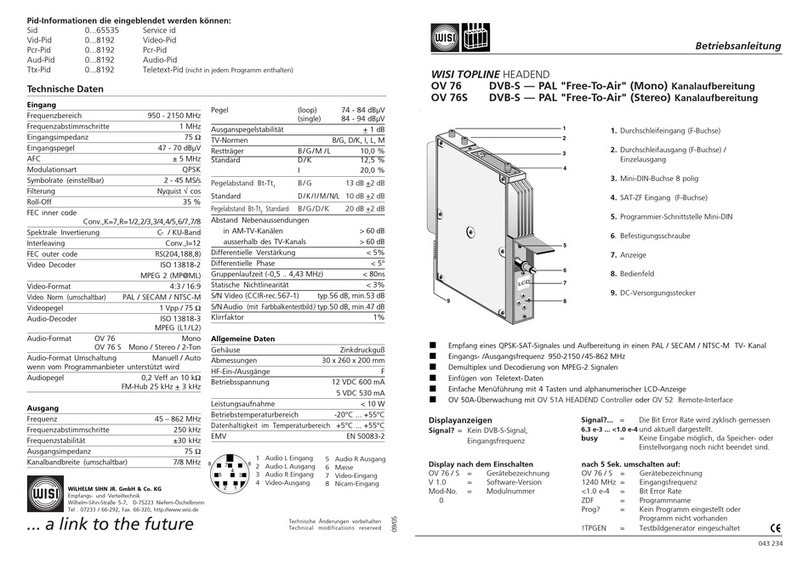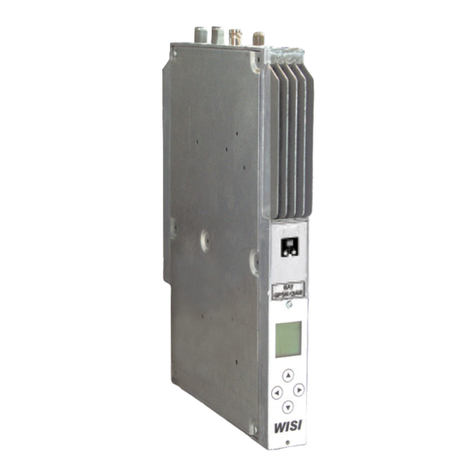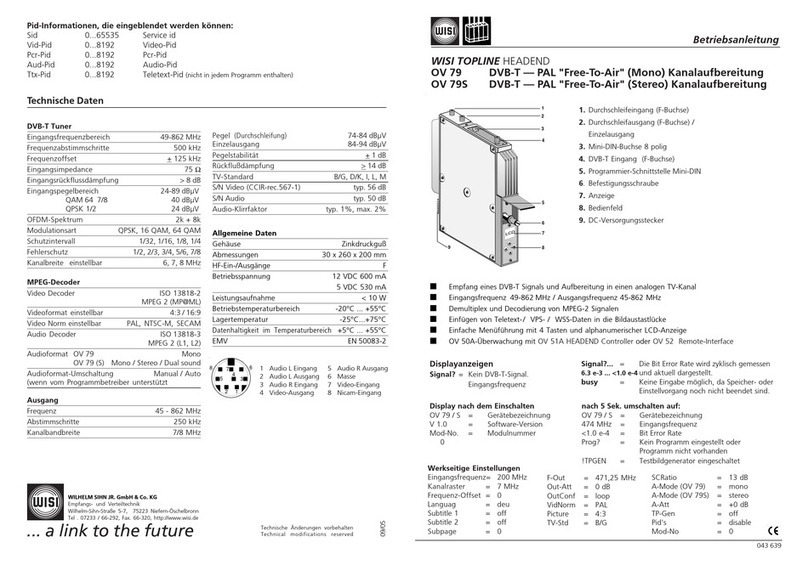
- 8 -
Bedienung / Instructions
Program Programmauswahl
1 Das Erste _T .........Pgm.-Name; „_“ = FTA; T = TV
2 zdf_neo _T* ........Pgm.-Name; „_“ = FTA; T = TV; „*“ = ausgewählt
3 Sky Cinema#T$ ........Pgm.-Name; „#“ = scrambled; „$“ = descramble
4 NDR Kultur _R .........Pgm.-Name; „_“ = FTA; R = Radio
Programme selection
1 Das Erste _T .........Pgm.-Name; “_” = FTA; T = TV
2 zdf_neo _T* .......Pgm.-Name; “_” = FTA; T = TV; “*” = selected
3 Sky Cinema#T$ ........Pgm.-Name; “#” = scrambled; “$” = descramble
4 NDR Kultur _R .........Pgm.-Name; “_” = FTA; R = Radio
Die Darstellung dient nur als Beispiel und ist aus verschiedenen Transpondern zusammengefügt. Hier
werden die vorhandenen Services dargestellt. Der Service wird mit einer laufenden Nummer darge-
stellt, dann folgt der Service-Name. Die Zeichen „_“ oder „#“ zeigen den Verschlüsselungsstatus des
Eingangssignales an: „_“ steht für FTA (free to air) nicht verschlüsselt und „#“ steht für einen ver-
schlüsselten Service. Das nächste Zeichen gibt den Servcie-Typ an „T“ = TV, „R“ = Radio,
„H“ = TV-HD. Ein Service kann durch Drücken der Links-Taste ausgewählt werden, es wird ein „*“
ganz rechts im Display dargestellt. Wird die linke Taste nochmals betätigt, so wird der Service zur
Entschlüsselung hinzugefügt, der „*“ wird dann durch ein „$“ ersetzt. Wird die Links-Taste nochmals
betätigt, so wird der Service wieder abgewählt.
Achtung:
Befindet sich der PID-Filter im Transparent-Modus, so können keine Services aus der Liste entfernt
werden und es kann bei den einzelnen Services nur zwischen „*“ ausgewählt und „$“ entschlüsselt
gewählt werden.
The following description is only an example, which is combined from services of different transpon-
ders. It displays the available services.
The services are represented with a consecutive number, followed by the service name. The symbol
“_” or “#” are showing the status of the decryption: “_” stands for FTA (free to air), and “#” stands for
an encrypted service. The next symbol shows the type of service: “T” for TV, “R” for radio and “H“ for
HD-TV. One service can be selected by pushing the left-key, and a “*” symbol appears at the right
hand side on the display. By pushing the same key again, the selected service wil be added to the list
for decryption, and the symbol “*” will be replaced by the symbol “$”. By pushing the left button
another time, the selected service will be removed from decryption.
Attention:
If the PID-filter operates in transparent mode, any service can‘t be removed from the list, it only can
be selected between “*” and “$”.






























